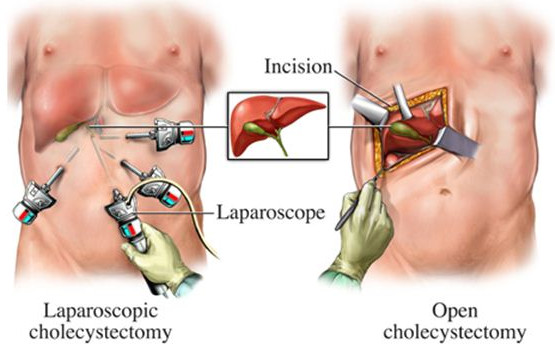
Laproscopic cholecystectomy
The gallbladder is a small, pear-shaped organ located beneath the liver on the right side of the abdomen. The gallbladder stores bile, a digestive fluid that is released into the small intestine. Gallstones that block the tube leading out of the gallbladder usually cause cholecystitis. Cholecystitis is gallbladder inflammation
A laparoscopic cholecystectomy is gallbladder removal surgery. What are the chances that you'll need a cholecystectomy?
A cholecystectomy may be performed if your gallbladder:
- Contains solid material lumps (gallstones)
- Is red, swollen (inflamed), or infected (cholecystitis)
- Is cancerous
Symptoms of cholecystitis may include:
- Severe pain in your upper right or center abdomen
- Pain that spreads to your right shoulder or back
- Tenderness over your abdomen when it's touched
- Nausea
- Vomiting
- Fever
- Cholecystitis symptoms often appear after a meal, especially a large or fatty one. Diagnosis
Before laparoscopic cholecystectomy, some common diagnostic tests include:
- Blood tests.
- Imaging tests that show your gallbladder.
- Abdominal ultrasound,
- endoscopic ultrasound,
- CT scan or magnetic resonance cholangiopancreatography (MRCP)
- A hepatobiliary iminodiacetic acid (HIDA) scan Treatment
Laparoscopic cholecystectomy: That is, it is performed without a large incision. Instead, one to three tiny cuts are made. A long, thin tube known as a laparoscope is inserted through one of the incisions. It includes a tiny video camera as well as surgical tools. The surgeon uses a TV monitor to guide the tools and see inside your abdomen. The surgeon does the surgery while looking at a TV monitor. One of the incisions is used to remove the gallbladder.
Make an appointment right away for consultation on any signs and symptoms noticed
Call With Doctor